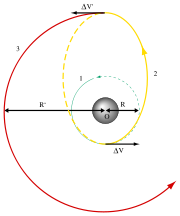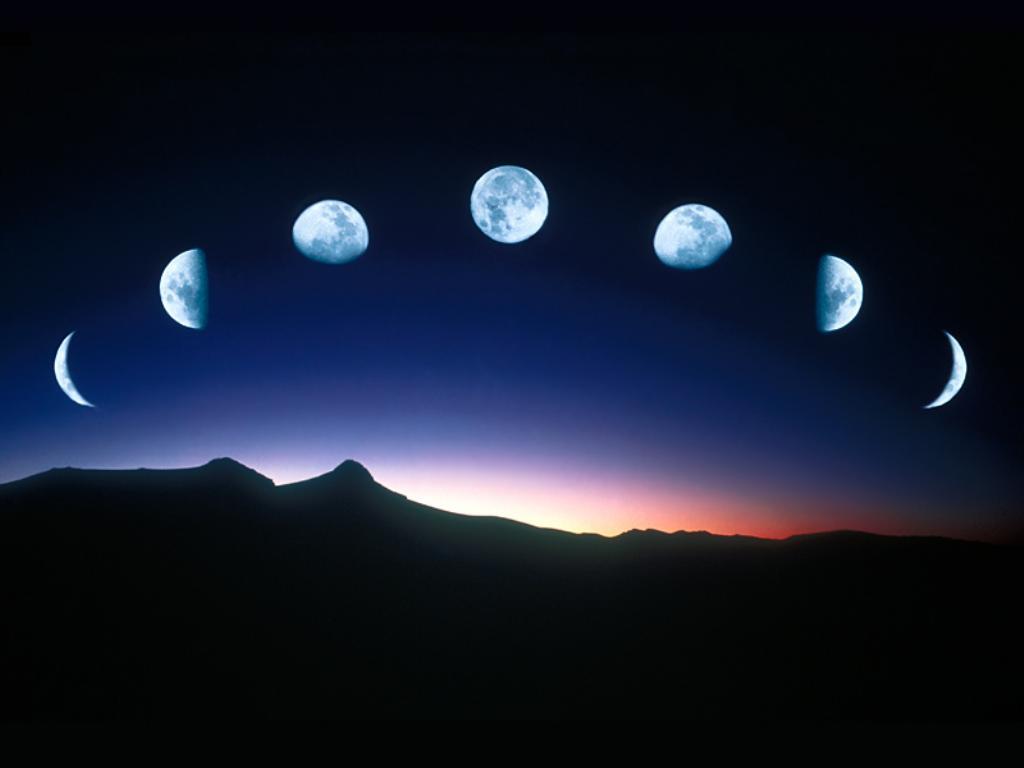- Details
-
Last Updated on Tuesday, 02 July 2013 15:58
 Teaching & Presentations | Charles University | Planetology LAB
Teaching & Presentations | Charles University | Planetology LAB
Planetology for Geologists, Laboratory
 The purpose of the lab is to complement the material presented in the lecture part of the class, and the lecture is a pre-requisite or co-requisite for the Lab.
The purpose of the lab is to complement the material presented in the lecture part of the class, and the lecture is a pre-requisite or co-requisite for the Lab.
The Lab provides the student with an opportunity to apply the principles discussed in the lecture part of the class. The LAB will strengthen your knowledge of the main course subject. Students are encouraged to work in pairs or in groups if they choose, except for tests. Tests are strictly individual efforts.

 Introduction to Astronomical Telescopes:
Introduction to Astronomical Telescopes:
Types (lenses & mirrors: see chapter 9, p. 55 - 60):
refracting; reflecting; combinations.
 Mounting Systems:
Mounting Systems:
Altazimuth mounting (no polar axis available)
Equatorial (German) mounting; Fork mounting; Equatorial (English) mounting; and Yokemounting.
 Accessories:
Accessories:
Eyepieces, Camera, Finder telescope, Clock drive, Slow motion controls, Setting circles, Solar observing screen, Filters, Photometers, Spectroscopes, Polarimeters, Filar micrometers, and Image tubes.
 Telescope Performance Terms:
Telescope Performance Terms:
Light gathering power, Resolving power, Magnification, Scale, Focal length, Focal (F) ratio (image brightness).
Homework: compare two types of telescopes (advantages/ disadvantages); explain the advantage of mountings with available polar axis.
 Constellations & the Celestial Sphere, definitions:
Constellations & the Celestial Sphere, definitions:
Celestial sphere, Zenith, Horizon
Altitude, Azimuth, Latitude, Longitude, Celestial poles, Celestial equator, Magnitude vs. brightness.
Motion of the Stars: On the sky, all stars move due to the Earth’s rotation, on the northern hemisphere except Polaris.
Polaris & the Observer’s Latitude: Find Polaris by Big Dipper’s pointers, Cassiopeia & Little Dipper’s handle.
Limiting Magnitude: Estimate the magnitude by comparing with those of known values in distinct constellations (use map).

 Constellation Study:
Constellation Study:
Browse through the sky. Quiz 1
 Interplanetary Travel: Planetary Orbits & Periods.
Interplanetary Travel: Planetary Orbits & Periods.
Use Kepler’s third law to relate orbital period to the average distance of a planet from the Sun. (Hohmann) Transfer Orbits (of a spacecraft). See: http://www.nasa.gov/basics/bsf4-1.html . The spacecraft’s orbit is an ellipse (yellow) with the Sun in one focus, the Earth’s orbit (blue) as perihelion, and the planet’s orbit (red) as aphelion. The opportunity to launch a spacecraft on a transfer orbit to Mars occurs about every 25 months. In the LAB, we will calculate the travelling time.
 The Seasons:
The Seasons:
Sunshine at summer & winter solstices. Sun’s altitude depends on your latitude, the date, and daytime Questions: You can answer with the help of the celestial globe.
 The Moon:
The Moon:
gross lunar features; types of lunar features; properties of maria; relative ages of overlying lunar features; heights of lunar features rilles; relative crater ages; crater counting & the highlands, mass concentrations, mascons (5 on visible side).
 FIELD TRIP:
FIELD TRIP:
the date and site(s) will be discussed in the class. we may go to the Prague Planetarium, Technical Museum or, in the evening, to an observatory.

|
Planetologie
pro geology, praktika |
Planetology
for Geologists, Laboratory |
Planetologie
für Geologen, Praktikum |
|
CZ |
E |
D |
1
|
Účelem praktik je doplnit látku základní přednášky, která je předpokladem pro praktika. Praktika poskytují příležitost užít myšlenky z přednášky. Praktika posílí Vaše znalosti základní přednášky. |
The purpose of the lab is to complement the material presented in the lecture part of the class, and the lecture is a pre-requisite or co-requisite for the Lab. The Lab provides the student with an opportunity to apply the principles discussed in the lecture part of the class. The LAB will strengthen your knowledge of the main course subject |
Zweck des Praktikums ist eine Ergänzung der Grundvorlesung, die die Voraussetzung des Praktikums ist. Das Praktikum bietet eine Angelegenheit, die Ideen der Grundvorlesung zu verwirklichen. Das Praktikum stärkt Ihre Kenntnisse der Grundvorlesung. |
| 2 |
Doporučuji, aby při prakticích studenti pracovali ve skupinách podle své volby, vyjma testy: ty jsou zcela individuální projekty. |
Students are encouraged to work in pairs or in groups if they choose, except for tests. Tests are strictly individual projects. |
|
3
IN |
Úvod do typů astronomických teleskopů (čočky a zrcadla: viz kapitola 9, str. 55-60): refrakční, reflekční, kombinace. |
Introduction to Astronomical Telescopes:
Types (lenses & mirrors: see chapter 9, p. 55 - 60):
refracting; reflecting; combinations.
|
|
4
IN |
Závěsy: altazimutový závěs (bez polární osy), rovníkový (německý) závěs, vidličkový (anglický) závěs, sedlový závěs. |
Mountings:
Altazimuth mounting (no polar axis available),
Equatorial (German) mounting; Fork mounting; Equatorial (English) mounting; Yoke mounting. |
|
5
IN |
Příslušenství: okulár, kamera, hledací teleskop, hodinový pohon, ovládání pomalého pohybu, nastavovací kruhy, stínítko pro projekci Slunce, filtry, fotometry, polarimetry, vláknové mikrometry, zobrazovací nástavce. |
Accessories:
Eyepieces, Camera, Finder telescope, Clock drive, Slow motion controls, Setting circles, Solar observing screen, Filters, Photometers, Spectroscopes, Polarimeters, Filar Micrometers, and Image Tubes.
|
|
6
IN |
Výkon teleskopu: kapacita sběru světla, rozlišovací schopnost, zvětšení, měřítko, ohnisková délka, ohniskový (F) poměr (obrazová světelnost). Domácí cvičení: srovnejte dva typy teleskopů (výhody/nevýhody); vysvětlete výhody závěsů s polární osou. |
Telescope Performance Terms: Light gathering power, Resolving power, Magnification, Scale, Focal length, Focal (F) ratio (image brightness).
Homework: compare two types of telescopes (advantages/disadvantages); explain the advantage of mountings with available polar axis. |
|
7
OUT |
Definice souhvězdí a nebeské koule: nebesk8 koule, zenit (nadhlavník), obzor, úhlová výška, azimut, zeměpisná šířka, zeměpisná délka, nebeské poly, nebeský rovník, magnituda vs. světelnost. Pohyb hvězd: na obloze se všechny hvězdy pohybují zemskou rotací kolem osy, na severní polokouli proti směru hodinových ručiček vyjma Severky (Polárky). Polárka a pozorovatelova zeměpisná šířka: najděte Polárku pomocí prodloužení zadní strany Velkého vozu, Cassiopei a voje Malého vozu. |
Constellations & the Celestial Sphere, definitions: Celestial sphere, Zenith, Horizon
Altitude, Azimuth, Latitude, Longitude, Celestial poles, Celestial equator, Magnitude vs. brightness.
Motion of the Stars: On the sky, all stars move due to the Earth’s rotation, on the northern hemisphere except Polaris.
Polaris & the Observer’s Latitude: Find Polaris by Big Dipper’s pointers, Cassiopeia & Little Dipper’s handle.
Limiting Magnitude: Estimate the magnitude by comparing with those of known values in distinct constellations (use map). |
|
8
IN |
Studium souhvězdí: procházky oblohou. Quiz 1. |
Constellation Study: Browse through the sky.
Quiz 1 |
|
9
IN |
Meziplanetární let: planetární oběhy a jejich doby. Užijte Keplerův třetí zákon pro srovnání doby oběhu a průměrné vzdálenosti planety od Slunce. (Hohmannovy) přenosové oběhy (kosmické lodi). Viz:
http://www.nasa.gov/basics/bsf4-1.html . Oběh kosmické lodi je elipsa se Sluncem v jednom ohnisku, oběhu Země jako periheliem a oběhem planety jako apoheliem. Příležitost k vypuštění sondy na přenosový oběh k Marsu nastává každých 25 měsíců. Rychlosti; komunikace se Zemí; návrat.. |
Interplanetary Travel: Planetary Orbits & Periods. Use Kepler’s third law to relate orbital period to the average distance of a planet from the Sun. (Hohmann) Transfer Orbits (of a spacecraft). See: http://www.nasa.gov/basics/bsf4-1.html . The spacecraft’s orbit is an ellipse with the Sun in one focus, the Earth’s orbit as perihelion, and the planet’s orbit as aphelion. The opportunity to launch a spacecraft on a transfer orbit to Mars occurs about every 25 months. Velocities; communicating with Earth; return.
|
|
10
IN |
Roční období: sluneční světlo při letním a zimním slunovratu. Úhlová výška slunce závisí na Vaší zeměpisné šířce, datu a denní době. Otázky: odpovědět můžete s pomocí nebeského globu. |
The Seasons: Sunshine at summer & winter solstices. Sun’s altitude depends on your latitude, the date, and daytime Questions: You can answer with the help of the celestial globe. |
|
11
IN |
Měsíc: hrubé měsíční prvky; typy měsíčních prvků; vlastnosti marií; relativní stáří překrývajících se měsíčních prvků; výška měsíčních prvků; rýhy; relativní stáří kráterů; počítání kráterů a výšiny. |
The Moon: gross lunar features; types of lunar features; properties of maria; relative ages of overlying lunar features; heights of lunar features;
rilles; relative crater ages; crater counting & the highlands.
|
|
12
OUT |
Exkurse: na datu a místě se dohodneme ve třídě. Můžeme navštívit pražské planetarium, Technické museum, Keplerovo museum, nebo večer observatoř (risiko oblačnosti). |
FIELD TRIP: the date and site(s) will be discussed in the class. We may go to the Prague Planetarium, Technical Museum, Kepler's museum or, in the evening, to an observatory (risk of weather). |
|
|
|
copyright pictures:
http://www.scifiartposters.com/images/Telenewetx_6.jpg
http://www.bodylovewellness.com/wp-content/uploads/2010/03/Moon-in-phases.jpg
 Teaching & Presentations | Charles University | Planetology LAB
Teaching & Presentations | Charles University | Planetology LAB The purpose of the lab is to complement the material presented in the lecture part of the class, and the lecture is a pre-requisite or co-requisite for the Lab.
The purpose of the lab is to complement the material presented in the lecture part of the class, and the lecture is a pre-requisite or co-requisite for the Lab. 
![]() Introduction to Astronomical Telescopes:
Introduction to Astronomical Telescopes:![]() Mounting Systems:
Mounting Systems:![]() Accessories:
Accessories:![]() Telescope Performance Terms:
Telescope Performance Terms: ![]() Constellations & the Celestial Sphere, definitions:
Constellations & the Celestial Sphere, definitions: 
![]() Constellation Study:
Constellation Study: ![]() Interplanetary Travel: Planetary Orbits & Periods.
Interplanetary Travel: Planetary Orbits & Periods. ![]() The Seasons:
The Seasons: ![]() The Moon:
The Moon: ![]() FIELD TRIP:
FIELD TRIP: 

